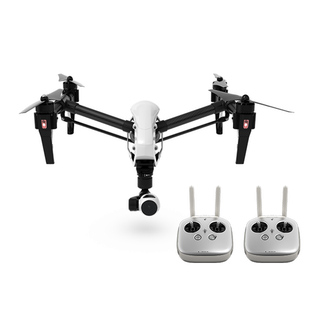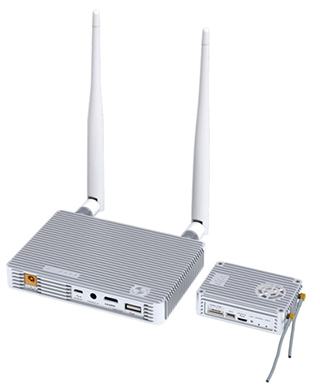China's Dajiang Innovation Technology wasn't the first company to make remote-controlled drones. But it has come to dominate the market. Forbes says the company generated $500 million in revenue selling 400,000 units in 2014, and that it is set to double that dollar figure this year. We asked DJI spokesman Randy Braun about design trends and flying tips for the latest generation of unmanned aerial vehicles. Watch this video from NAB to see a demonstration of the capabilities of DJI's Phantom 3 and Inspire 1 drones (that's Braun on the left), then read the Q&A.
StudioDaily: DJI recently developed the Phantom 3, a $1,259 ready-to-fly system with a built in 4K camera, and it seems like GoPro is answering with plans to design its own drone. How important will these integrated camera systems be to the development of the overall UAV market?
Randy Braun: The DJI Phantom 1 was first released in January of 2013. Its flight stabilization technology rocked the world. At the same time, GoPro action cameras were becoming even smaller and lighter. The two products made a perfect pair, and aerial imaging immediately became affordable, accessible, simple, and fun. With the second generation of Phantom, The Phantom 2 Vision, we gave the consumer the option to use their own camera, which was often a GoPro, but we also offered a fully integrated camera of our own. Our customers like it and so we continue to move forward with camera hardware and imaging technologies. Both companies encourage creativity and innovation. It has been fun to see other small drones being released into the market. Competition breeds a better product. At DJI, our CEO demands perfection and that is what we work toward daily.
Does DJI work together with camera vendors when designing aerial gimbals for a specific model?
No. We develop gimbals that are biased toward specific camera models that photographers and videographers prefer to fly. It is a bonus if the camera is compact. With so many engineers in house, we can work fast to produce a new gimbal if that is what our customers asked for.

DJI's Inspire 1 with two remotes.
Beyond the actual flight kit (flying platform, gimbal, camera), what are the most mission-critical pieces of gear for a drone cinematographer?
For higher-end aerial cinematography, a second remote controller can be used to operate the camera independently of the drone. Complex scenes can be shot all while the drone operator is left to concentrate on safe flying. The real breakthrough during the past year has been the precision brushless three-axis gimbal. Even when flying aggressively, the cinematographer can now capture silky smooth shots without having to stabilize in post-processing. Additionally, DJI now produces a rectilinear lens, which radically reduces the distorted fish-eye effect of previous lenses.

DJI Lightbridge.
What are the most commonly used solutions for wireless monitoring from a drone flight?
The trend is moving toward high-definition video downlinks using the DJI Lightbridge system. The Inspire 1 drone also encourages HDMI live video straight out of a port on the the back of the pilot’s remote controller.
Can you talk a little bit about emerging design trends, and how your product designs are evolving based on feedback from users?
Products continue to become smaller, safer, and ready to fly straight out of the box. Cinematographers are typically artists and not DIY techies. An easy-to-use, stable flying camera platform is what our customers have asked for, and that is what we continue to develop and manufacture.
What mistakes are most commonly made by UAV operators? And can you share any tips on improving the quality of drone footage?
A common mistake that I often have made is to fly the drone too fast while shooting a video. A beautiful aerial video clip can be made with slow drone and camera movements. Also, I see many people flying too high for the scene. Just because a drone can fly high and fast doesn’t mean that the shot will look better. Low and slow might produce the shot you are looking for.
Randy Jay Braun is director of product experience for DJI.
Did you enjoy this article? Sign up to receive the StudioDaily Fix eletter containing the latest stories, including news, videos, interviews, reviews and more.










Leave a Reply